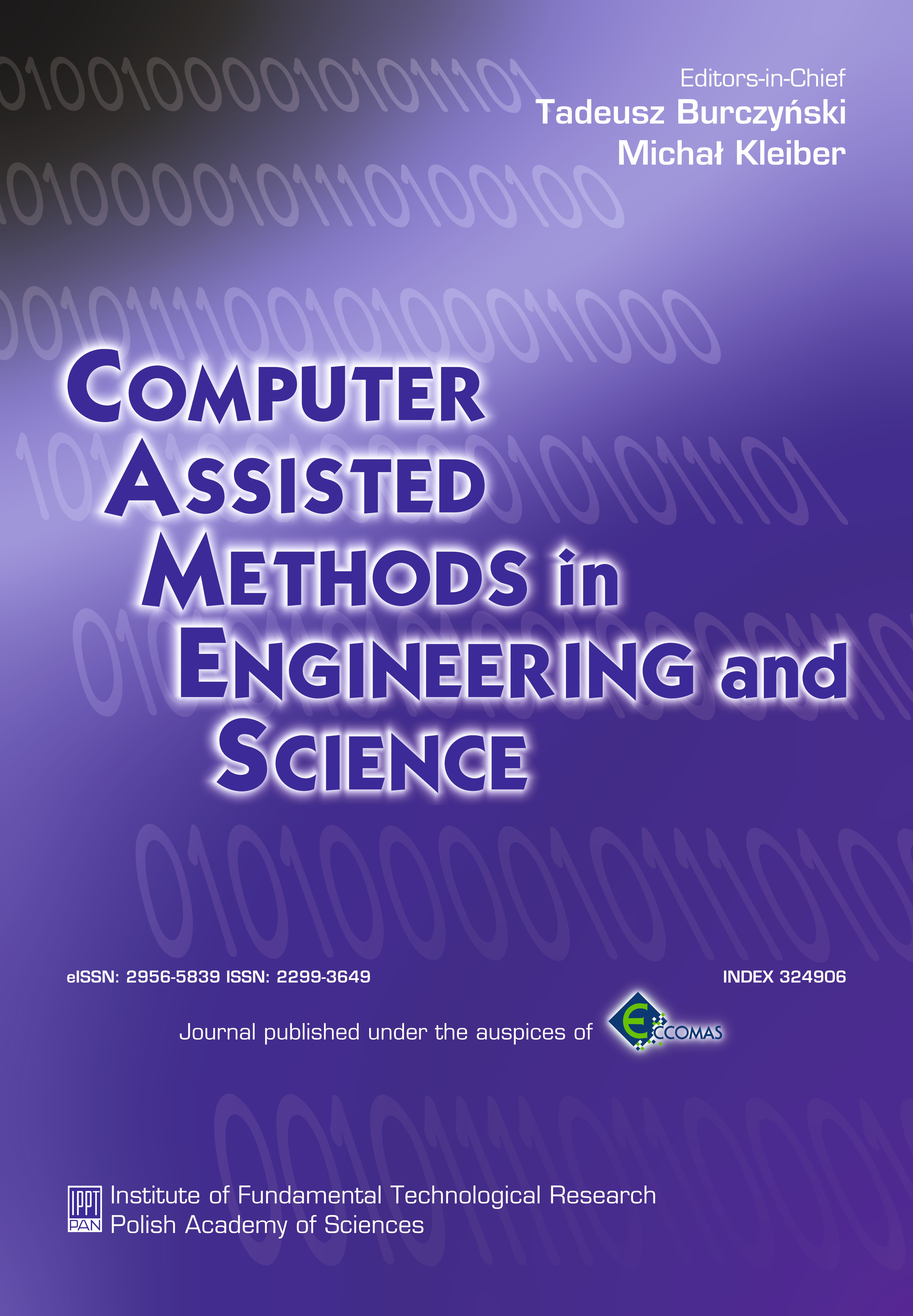The quality of numerical modelling of the flow around two buildings with different heights
Abstract
The paper is devoted to the problems with quality of numerical modeling for two-dimensional incompressible flow around two models of buildings with different heights. The calculations have been made with use of the turbulence model k-ε in the standard version and with the Finite Volume Method. The quality evaluation for the calculation is based on the comparison of the results with measurements in a wind tunnel. Hence, in this paper there have been presented the graphs of averaged velocities which are results of author's own measurements, as well as the graphs presenting the error in the calculated flow velocities. The main conclusion drawn from the research is that the flow around two models is more complicated than the flow around the single one and therefore the calculation results for the set of models are less accurate in comparison with the ones obtained for the single model.
References
[2] E.Błazik-Borowa.The problems of the application of the k−ε turbulence model to determination of the properties of flow around buildings. The Publisher of Lublin University of Technology, 2008.
[3] E. Błazik-Borowa. Analysis of the channel flow sensitivity to the parameters of the k−ε method. International Journal for Numerical Methods in Fluids, 58: 1257–1286, 2008.
[4] E. Błazik-Borowa, J. Podgórski. The choice of boundary conditions of the k−ε method for pressure (in Polish). In: Proceedings of the XII Polish Conference “Building physics in theory and practice”, 2009, pp. 15–16.
[5] S.R. Hanna, S. Tehranian, B. Carissimo, R.W. Macdonald, R. Lohner. Comparisons of model simulations with observations of mean flow and turbulence within simple obstacle arrays Atm. Env., 36: 5067–5079, 2002.
[6] C.M. Hrenya, E. J. Bolio, D. Chakrabarti, J. L.Sinclair. Comparison of low Reynolds numer k−ε turbulence models in predicting fully developed pipe flow. Chemical Engineering Science, 50(12): 1923–1941, 1995.
[7] A.V. Johansson. Engineering turbulence models and their development, with emphasis on explicit algebraic Reynolds stress models. In: M. Oberlack, F.H. Busse, eds. Theories of Turbulence. CISM Courses andLectures, 442, pp. 253–300. Springer Wien New York, 2002.
[8] B.E. Launder,D.B.Spalding. Mathematical models of turbulence. Academic Press, London and New York, 1972.
[9] B.E. Launder, D.B. Spalding. The numerical computation of turbulent flows. Computer Methods in Applied Mech. and Eng., 3: 269–289, 1974.
[10] F.S. Liena, E. Yeeb, Y. Chenga. Simulation of mean flow and turbulence over a 2D building array using high-resolution CFD and a distributed drag force approach. J. of Wind Eng. and Ind. Aerodynamics, 92: 117–158, 2004.
[11] S.V. Patankar. Numerical heat transfer and fluid flow. McGraw-Hill Book Company, 1980.
[12] S.G. Sajjadi, M.N. Waywell. Application of roughness-dependent boundary conditions to turbulent oscillatory flows, Int. Journal Heat and Fluid Flow, 18: 368–375, 1997.
[13] T.H.Shih, W.W.Liou,A.Shabbir, Z.Yang, J.Zhu. Anew k−ε eddy-viscosity model for high reynolds numer turbulent flows. Computers Fluid, 24(3): 227–238, 1995.
[14] R.M.C. So, H.S. Zhang, C.G. Speziale. Near-wall modeling of the dissipation rate equation. AIAA Journal, 29: 2069–2076, 1991.


